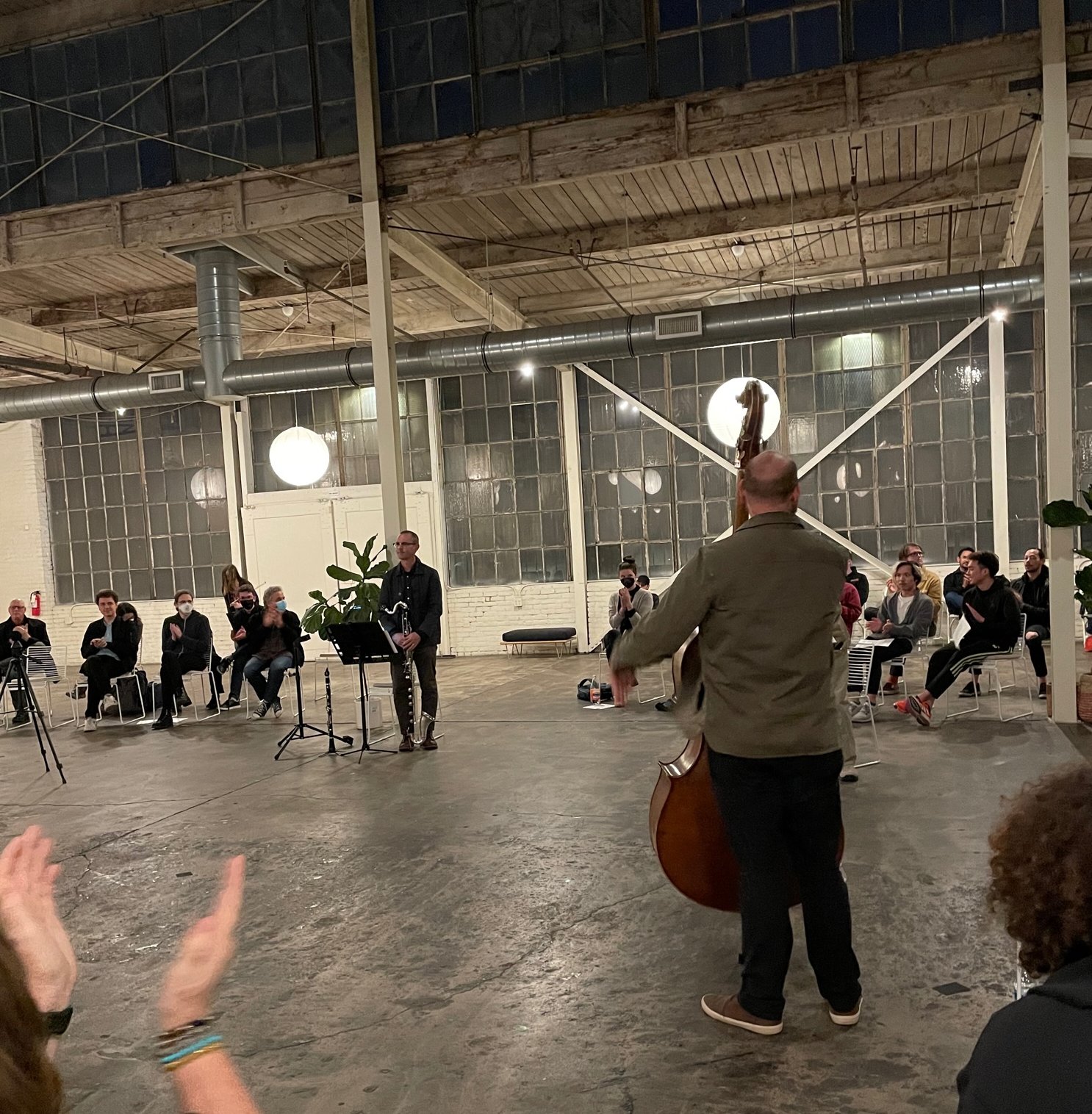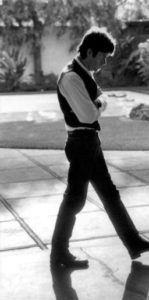
After almost three years on hiatus due to the covid pandemic, the Southland Ensemble returned to the concert stage on February 3, 2023 to perform Harmonium, experimental music composed by James Tenney. The venue was Frankie, a large studio building deep in the heart of the warehouse district in Boyle Heights. The Southland Ensemble is known for performing historically significant music. In selecting works by James Tenney for this concert, they gave voice to perhaps the most influential West Coast composer of the last 30 years. Three pieces, averaging about 20 minutes each, provided a full hour of pioneering harmonies from a variety of sustaining instruments, all masterfully played by thirteen top Los Angeles area musicians.
James Tenney was born in New Mexico and grew up in Arizona and Colorado. He had a long and distinguished academic career that included the University of Denver, the Julliard School and the University of Illinois. Tenney studied with a number of acclaimed composers, including Edgard Varèse, Harry Partch and John Cage. He also spent time at Bell Labs working in electronic music and he authored a number of articles on musical acoustics, musical form and perception as well as computer music. He taught at the Polytechnic Institute of Brooklyn, the University of California and York University in Toronto. Tenney is probably best known in Southern California as the Roy E. Disney Family Chair in Musical Composition at Cal Arts where he influenced an entire generation of West Coast composers.
Tenney was a well-known composer and theorist and his many performed works were on the cutting edge of musical development during his entire career. His pioneering work in alternate tuning systems and their perception was the focus of this concert. The three pieces that were performed are all essentially extended studies in the expressive power of new harmonic vocabularies.
Harmonium #1 was the first piece on the concert program. This piece dates from 1975/76 and is scored for an ensemble of twelve or more sustaining instruments. The Southland Ensemble players consisted of a string bass, cello, euphonium, some violins, clarinets, saxophone and flutes. The players were scattered separately throughout the large expanse of the Frankie studio space with the audience around the edges. A single, extended violin tone opened the piece, soon joined by a flute and a second violin. The other instruments followed, entering at various pitches, and eventually forming a sustained tutti chord that lasted some ten or 15 seconds. The players used a stopwatch at their music stands to time the start and finish of each in a series of chords as the piece progressed. All of the chords consisted of sustained tones with a crescendo/decrescendo that added some dynamic movement.
The pitches for each instrument were from an alternate tuning scheme and were marked up on the player’s parts. An electronic tuner was also used by the musicians to find the indicated pitch when it was outside of the twelve-tone equal temperament convention. For the wind instruments this involved alternate fingerings and other extended techniques to attain the composer’s intended pitch. The result was a series of sustained chords lasting for several seconds that were comprised of unconventional pitches from various combinations and subsets of the ensemble. Listeners experienced a sampler of sounds from a new harmonic language.
The venue was a fairly large open space and the acoustic was somewhat dry. This tended to isolate the higher register instruments into individual sounds. The full tutti chords benefited from a strong bass foundation and often filled the space with lovely warm tones. The presentation of sustained chords without any rhythmic or structural component invited the listener to examine the sounds with no preconceptions or expectations. Harmonium #1 is an intriguing presentation of new harmonies that evoke new and often mysterious emotions.
In a Large, Open Space (1994), the second piece on the concert program, was completed almost 20 years after Harmonium #1 and is identical in structure. This is also scored “for any 12 or more sustaining instruments” and the disposition of the Southland Ensemble players in the large spaces of the Frankie Studio remained as before. In a Large, Open Space opens with a strong tutti chord dominated by a warm sound from the strings in the lower registers. The woodwinds soon join in, adding to the comforting overall feel of the sustained chord. The piece proceeds as before, each chord lasting about ten seconds with some small dynamic movements to engage the listener. The lower tones tended to fill the space most effectively and the higher voices – especially the flute – occasionally provided dissonance and tension. The contrast between the warmer, lower register chords and the higher dissonant tones is more pronounced in this piece. This aides the intent of the composer to evoke new emotions from the new chords created by the alternate tuning. The playing of the Southland Ensemble was both disciplined and precise in the intonation of the unconventional pitches.
The third piece on the concert program was Harmonium #7 (2000). Although separated from the other pieces by a number of years, the format is the same; a series of “sustained tones for 12 or more instruments.” Harmonium #7 began with strong tones from the cello and bass with flutes and violins joining in their register on what sounded like the same note. Other instruments entered on this tone and then slowly dissembled in pitch. This proved engaging to the ear and produced some nice harmonies. As the piece progressed, the chords seemed more congruently organized by this sharing of pitches. The low bass notes especially acted to fill the room with warm sounds as the bottom end of a great tutti chord. The harmonies in this piece seemed more connected when the bass predominated and dissonance limited to the flutes and violins in their higher registers. The experimentation over the years by Tenney with this form, had, by 2000, resulted in a more cohesive overall sound.
Alternate tuning has become almost mainstream in contemporary music today. This concert reminds us of the expressive possibilities and the new emotional power inherent in unorthodox tuning systems. This performance by Southland Ensemble of three works by James Tenney honors the innovation and influence of one of the great composers of West Coast experimental music.
Harmonium was made possible with support from #VaccinateAll58.
The Southland Ensemble is:
Jennifer Bewerse
Natalie Brejcha
Eric KM Clark
Joshua Gerowitz
Morgan Gerstmar
Heather Lockie
Michael Matsuno
Wiliam Roper
Cassia Streb
Christine Tavolacci
Marta Tiesenga
Dave Tranchina
Brian Walsh
